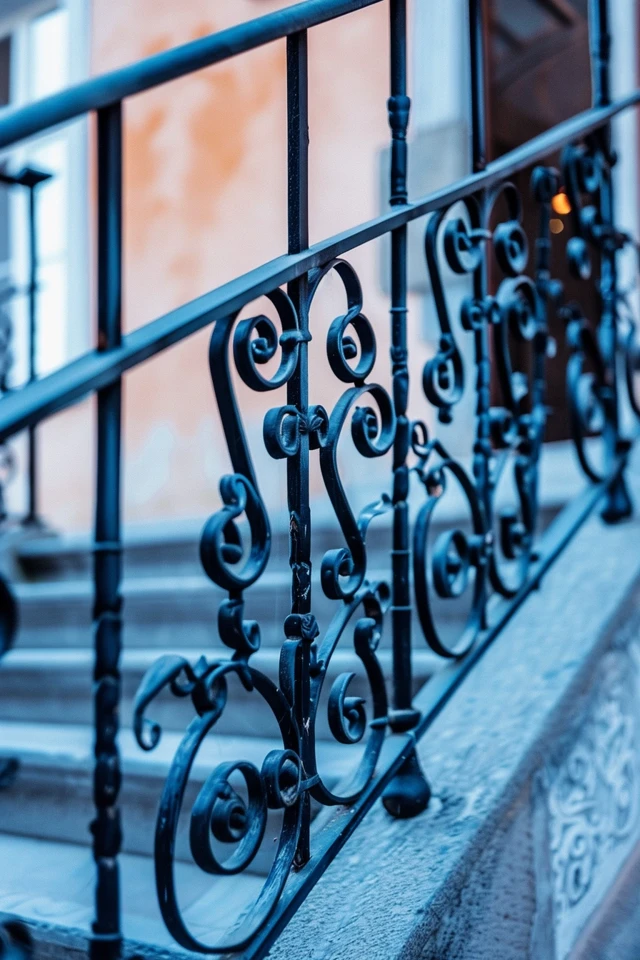Learning how to clean and maintain wrought iron railings is essential for their longevity and aesthetic appeal. This comprehensive guide will provide step-by-step instructions and best practices for outdoor maintenance of wrought iron railings. We will cover topics such as testing for lead-based paint, preparing the work area, cleaning the iron surfaces, removing rust, and applying protective coatings. By following these tips, you can ensure that your wrought iron railings remain beautiful and durable for years to come.
Key Takeaways:
- Regular outdoor maintenance is crucial for the longevity and aesthetic appeal of wrought iron railings.
- Testing for lead-based paint is essential, especially for railings installed before 1978.
- Properly preparing the work area ensures a safe and clean environment for maintenance tasks.
- Using suitable cleaning tools and techniques helps in effectively removing dirt, grime, and rust from the railings.
- Applying protective coatings is important to prevent future damage and maintain the beauty of the railings.
Testing for Lead-Based Paint and Preparing Your Work Area
Prior to embarking on any maintenance or restoration work on your wrought iron railings, it is crucial to test for the presence of lead-based paint, especially if they were installed before 1978. The use of lead-based paint was common during that era, and coming into contact with it can pose health risks. Demonstrating our commitment to safety, this guide places utmost importance on following the Environmental Protection Agency (EPA) guidelines and recommendations for working with lead-based paint. These measures not only safeguard your health but also ensure compliance with regulations governing lead exposure.
“Ensuring safety throughout the maintenance process is essential for the well-being of you and your loved ones,” states John Thompson, renowned expert in wrought iron maintenance. “By taking the necessary precautions, you can confidently handle lead-based paint.”

When working with lead-based paint, it is imperative to utilize proper safety equipment, such as gloves, protective clothing, safety goggles, and a respirator, to minimize exposure. Additionally, containment measures should be implemented to prevent the spread of lead dust. Be sure to seal off the work area from other parts of the house and use plastic sheeting or drop cloths to cover surfaces and prevent contamination. “At Thompson Restoration Services, we never compromise on safety,” assures Thompson. “We prioritize the well-being of our clients by strictly adhering to safety guidelines.”
To efficiently prepare your work area, select drop cloth materials that are durable and able to effectively catch any stray paint chips or debris. These materials can range from canvas or plastic drop cloths to old bedsheets or tarps, ensuring that they cover the entire work surface and nearby surroundings. Remember to secure the edges of the drop cloths to prevent them from shifting during the maintenance process.
Furthermore, it is essential to cover adjacent surfaces that may be at risk of paint splatter or damage during the cleaning and painting process. Whether it’s nearby plants, delicate architectural features, or furniture, providing adequate protection will prevent any unwanted repercussions. By keeping these surfaces covered, you can focus on your wrought iron railing maintenance with peace of mind.
“Proper work area preparation is the foundation of a successful restoration project,” affirms Thompson. “By investing time in these preliminary steps, you are setting yourself up for a smooth and efficient maintenance process.”

Cleaning Wrought Iron Surfaces and Rust Removal
Now that your work area is properly prepared, it’s time to focus on cleaning the wrought iron surfaces of your railings. To effectively remove dirt and grime, you’ll need a few essential cleaning tools. A wire brush is ideal for scrubbing away stubborn deposits, and mild dish soap can be used to create a gentle cleaning solution.
Start by wetting the entire surface with water. Then, apply the cleaning solution using the wire brush, working in small sections. Scrub the surface gently but firmly, paying extra attention to areas with heavy dirt buildup. Rinse each section thoroughly with clean water to remove any soap residue.
If you notice any rust spots on your wrought iron railings, don’t panic. Rust can be easily tackled with some sanding techniques. Begin by using sandpaper, preferably with a grit of 80 or higher, to gently sand the rusted areas. Apply even pressure and continue sanding until the rust is completely removed. Use a damp cloth to wipe away any debris, and ensure that the surface is dry before proceeding.
By following these cleaning steps, you’ll be able to remove dirt, grime, and even rust from your wrought iron railings, leaving them sparkling clean and ready for the next stage of maintenance or painting.


